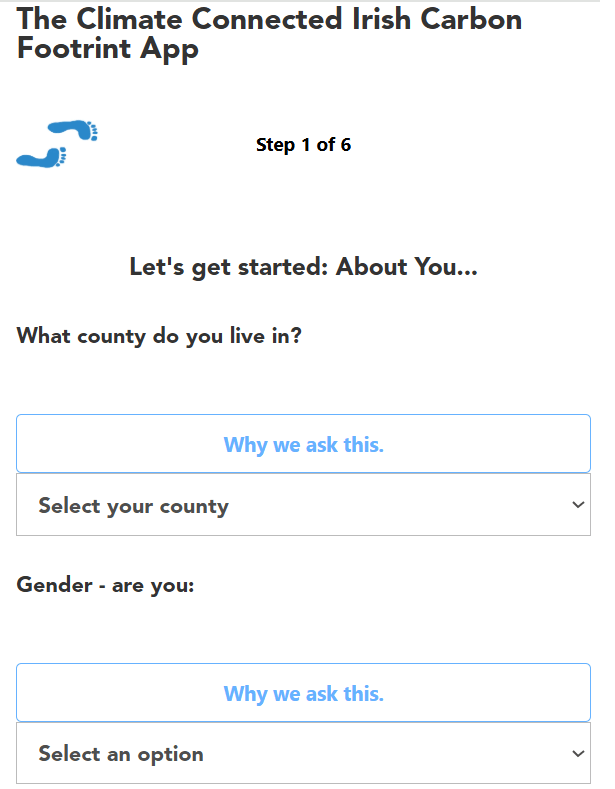Our ‘Carbon Footprint’, and how to reduce it
Community Carbon Footprints
Use our Community Level Carbon Footprint Map to find out the carbon emissions from Decarbonization Zones around Ireland.
Click on a marker on the map to find out more about each community.
Follow their work and get some great ideas from them.
See how the climate connected tools can help you match what they have done
IMPORTANT NOTE:
You will notice that the CO2eq per person emissionsthis is how much carbon dioxide - and other greenhouse gases - are created by each person in the community - you can see how the numbers are worked out below are on the whole higher for rural communities (those in the countryside) than urban communities.
There are a number of reasons for this:
Urban homes and businesses (in cities and big towns) often are on the natural gas grid. Natural gas produces less CO2 than oil or solid fuels, so heating in towns can create less CO2.
In towns and cities it is easier to get place sby public transport so you don’t have to drive as much – driving can make more CO2 than taking a bus or train the same distance.
Sometimes how land is used can produce or reduce CO2 – so small communities with a lot of land around them can sometimes have more CO2 per person than a closely packed community in a town in a smaller space.
In the map, the rural communities have their CO2eq/pp marked in BLUE
Our ‘carbon footprint app’
A carbon footprint tool enables someone to assess how much their own behaviour and choices impact the environment through carbon emissions.
Our ecological footprint tool will use a series of questions and calculations to determine the amount of carbon that is emitted through your activities. This will involve inputting information about lifestyle habits, such as how much energy you use at home, how often and how you travel, and what kind of food you eat.
Once your carbon footprint has been calculated, the tool will be able to provide you with recommendations for reducing your environmental impact. This might include suggestions for reducing energy consumption, using public transportation, or choosing more sustainable food options.

